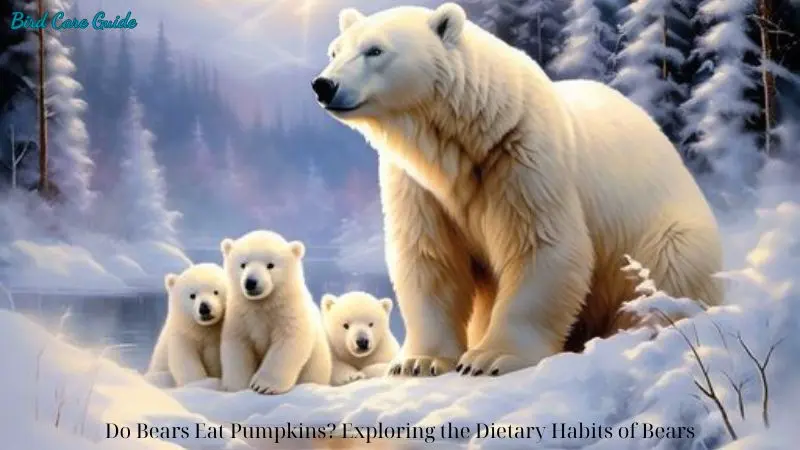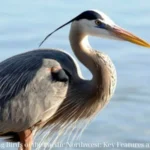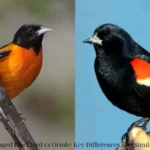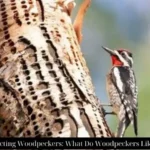Bears are fascinating creatures with diverse dietary habits. Their eating patterns vary significantly depending on the species, season, and availability of food. One question that often arises among wildlife enthusiasts and gardeners alike is, “Do bears eat pumpkins?” This article, “Bird Care Guide” delves into the dietary habits of bears, exploring their hidden interest in pumpkins and other seasonal foods.
Understanding Bear Species and
To comprehend whether bears eat pumpkins, it is crucial to understand the dietary preferences of different bear species. Bears are omnivores, meaning they consume a variety of foods, including plants, fruits, insects, and meat. Here, we will focus on three primary bear species: the American black bear, the brown bear (including the grizzly bear), and the polar bear.
American Black Bear (Ursus americanus)
The American black bear is the most common bear species in North America. These bears have a highly adaptable diet, which changes with the seasons.
- Spring: In spring, black bears primarily feed on fresh vegetation, including grasses, leaves, and forbs. They also consume insects and small mammals as they emerge from hibernation and need to replenish their energy reserves.
- Summer: During summer, black bears forage for berries, fruits, nuts, and insects. They are known to raid beehives for honey and larvae.
- Fall: In fall, black bears focus on high-calorie foods to build up fat reserves for winter hibernation. They consume acorns, nuts, and a variety of fruits. This is the season when pumpkins become a potential food source.
- Winter: Black bears hibernate in winter, relying on their fat reserves for sustenance. They do not eat during this period.
Brown Bear/Grizzly Bear (Ursus arctos)
Brown bears, including the grizzly bear subspecies, have a diverse diet that varies based on their habitat and food availability.
- Spring: Brown bears emerge from hibernation and feed on fresh vegetation, roots, and small mammals. They also scavenge for carrion.
- Summer: During summer, brown bears feast on salmon, particularly in regions where salmon runs are prevalent. They also consume berries, fruits, and insects.
- Fall: In fall, brown bears continue to eat berries and fruits, along with nuts and acorns. They also hunt for larger prey, such as deer and moose, to build up fat reserves.
- Winter: Brown bears enter a state of torpor during winter, where they remain in their dens and do not eat.
Polar Bear (Ursus maritimus)
Polar bears have a specialized diet that is heavily dependent on marine mammals, particularly seals.
- Spring and Summer: Polar bears hunt seals on sea ice, relying on their blubber for energy.
- Fall and Winter: As sea ice forms, polar bears continue to hunt seals. In areas where sea ice is absent, polar bears may scavenge for other available food sources, though they are less likely to encounter pumpkins.
Do Bears Eat Pumpkins?
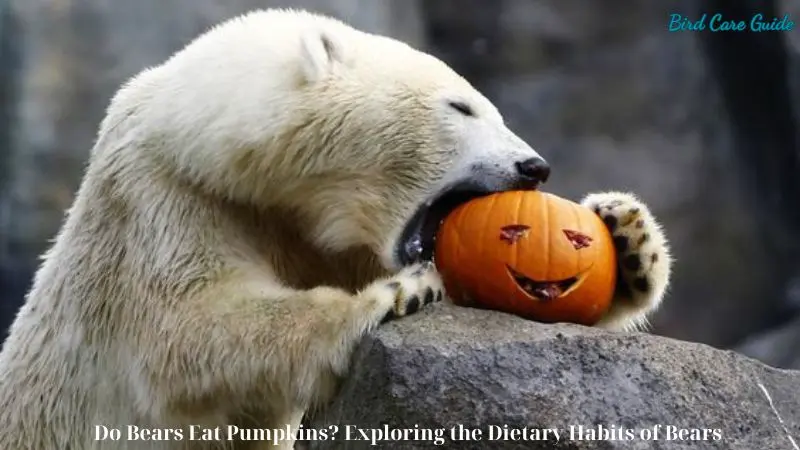
Pumpkins are a seasonal food that becomes abundant in the fall, coinciding with the time when bears are actively foraging to build up their fat reserves. So, do bears eat pumpkins? The answer is yes, bears, particularly black bears and brown bears, may eat pumpkins if they come across them.
Nutritional Value of Pumpkins
Pumpkins are a nutritious food source for bears. They are rich in vitamins A and C, potassium, and fiber. The high carbohydrate content of pumpkins provides a quick energy boost, which is beneficial for bears preparing for hibernation. The seeds are also nutritious, offering healthy fats and protein.
Bears Raiding Pumpkin Patches
In regions where bears and humans coexist, it is not uncommon for bears to raid pumpkin patches or gardens. Bears are opportunistic feeders and will take advantage of easily accessible food sources. Farmers and gardeners may find their pumpkins damaged or consumed by bears, especially during the fall season.
Human-Bear Interactions and Pumpkin Consumption
The consumption of pumpkins by bears often occurs in areas where human activities overlap with bear habitats. This intersection can lead to both positive and negative interactions.
Benefits of Feeding Pumpkins to Bears
In controlled environments like wildlife rehabilitation centers or zoos, feeding pumpkins to bears can be beneficial. It provides a source of enrichment, encouraging natural foraging behaviors and adding variety to their diet.
Risks and Challenges
In the wild, bears raiding gardens and farms for pumpkins can lead to conflicts with humans. Bears that become accustomed to foraging for food in human-populated areas may lose their natural fear of people, increasing the risk of dangerous encounters. This can result in bears being relocated or, in some cases, euthanized to protect public safety.
Mitigating Human-Bear Conflicts
To reduce the risk of conflicts, it’s essential for communities in bear habitats to take preventive measures. This includes securing garbage, using bear-proof containers, and implementing proper fencing around gardens and farms. Educating the public about bear behavior and the importance of not feeding wildlife can also help mitigate these issues.
Exploring the Broader Dietary Habits of Bears
While the consumption of pumpkins by bears is an interesting phenomenon, it is just a small part of their diverse dietary habits. To gain a comprehensive understanding of bear nutrition, it is essential to delve deeper into the various foods that constitute their diet across different seasons and regions.
Seasonal Variations in Bear Diets
Bears exhibit significant seasonal variations in their diet, driven by the availability of food sources and their physiological needs. This adaptability is crucial for their survival in diverse environments.
Spring
In the spring, bears emerge from hibernation with depleted energy reserves. Their diet during this period focuses on foods that are readily available and rich in nutrients. Common food sources include:
- Early Vegetation: Bears consume young shoots, grasses, and leaves, which provide essential vitamins and minerals.
- Insects: Insects such as ants and beetles are abundant and provide a good source of protein.
- Carrion: Bears may scavenge on the remains of animals that did not survive the winter, which helps replenish their protein and fat stores.
Summer
Summer is a period of relative abundance, with a wide variety of food sources available. Bears’ diets during this season are diverse and include:
- Berries and Fruits: Summer brings an abundance of berries, such as blueberries, raspberries, and blackberries. These fruits are rich in sugars and antioxidants, providing a quick energy boost.
- Fish: In regions where salmon runs occur, bears, especially grizzlies, heavily rely on fish as a primary food source. The high-fat content of fish is crucial for building fat reserves.
- Plants and Roots: Bears continue to consume a variety of plant material, including roots and tubers, which provide carbohydrates and fiber.
Fall
Fall is a critical period for bears as they prepare for hibernation. Their feeding behavior becomes more focused on high-calorie foods to maximize fat storage. Key food sources include:
- Nuts and Seeds: Acorns, beechnuts, and other seeds are rich in fats and proteins, making them ideal for fat accumulation.
- Late-Season Fruits: Fruits like apples and pumpkins are harvested in the fall and can become significant food sources for bears.
- Carbohydrate-Rich Foods: Bears seek out carbohydrate-rich foods to convert into fat. Pumpkins, with their high carbohydrate content, fit well into this dietary need.
Winter
During winter, bears enter a state of hibernation, significantly reducing their metabolic rate. They do not eat or drink and rely entirely on their fat reserves accumulated during the fall. The physiological adaptations of bears allow them to survive this prolonged period of fasting
The Ecological Role of Bears
Bears play a vital role in maintaining the health and balance of their ecosystems. Their feeding habits contribute to various ecological processes, highlighting the importance of their conservation.
Seed Dispersal
Bears contribute to seed dispersal through their consumption of fruits and berries. Seeds ingested by bears are often deposited in different locations through their feces, facilitating the growth of new plants and contributing to forest regeneration.
Soil Aeration
By digging for roots, tubers, and insects, bears help aerate the soil. This activity promotes nutrient cycling and enhances soil health, benefiting plant growth.
Predation and Scavenging
As predators and scavengers, bears help control populations of smaller animals and contribute to the decomposition process. Their scavenging behavior ensures that carrion is removed from the environment, reducing the spread of disease.
Conclusion
The question “Do bears eat pumpkins?” opens a window into the fascinating and complex dietary habits of bears. While pumpkins are not a staple food for most bear species, they become a valuable food source in certain contexts, particularly for American black bears and grizzly bears during the fall.
Understanding the broader dietary habits of bears, their seasonal variations, and their interactions with human activities provides valuable insights into their behavior and ecological roles. By promoting responsible human practices and implementing effective wildlife management strategies, we can ensure the coexistence of bears and humans in shared landscapes, preserving these magnificent creatures for future generations.

